
Are LED Ceiling Lights Any Good
- Interior Design
- May 9, 2024
LED ceiling lights have become increasingly popular in recent years due to their energy efficiency, long lifespan, and versatility in design.
This article explores what LED ceiling lights are, how they work, and the benefits of using them. We will also discuss the different types of available LED ceiling lights, factors to consider when choosing them, and how they compare to other types of lighting.
Stay tuned to learn everything you need to know about LED ceiling lights.
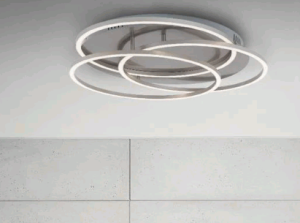
What Are LED Ceiling Lights?
Contents
LED Ceiling Lights are modern lighting fixtures that use Light Emitting Diodes (LEDs) as the primary light source. These fixtures are designed for ceiling mounting to provide efficient and effective illumination in various indoor spaces.
One of the key benefits of LED Ceiling Lights is their energy efficiency, making them an eco-friendly lighting option. LEDs consume significantly less power compared to traditional incandescent or fluorescent bulbs, resulting in lower electricity bills and reduced environmental impact. LED technology offers a longer lifespan, meaning less frequent replacement and maintenance costs.
LED Ceiling Lights come in a variety of designs and styles to suit different preferences and interior décor. From sleek and minimalistic flush mount fixtures to decorative pendant lights, there is a wide range of options available. Some models even offer dimmable features for adjustable brightness levels and mood settings.
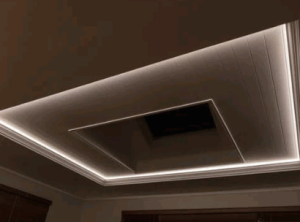
How Do LED Ceiling Lights Work?
LED Ceiling Lights operate by converting electricity into light using Light light-emitting diodes (LEDs) as the light source. When electricity passes through the semiconductors in the LED, it produces photons that emit light. This process ensures energy-efficient illumination with minimal heat generation.
LEDs are known for their durability and longevity, outlasting traditional incandescent bulbs by a significant margin. LED modules play a crucial role in controlling the intensity and color of the light emitted. These modules consist of multiple LEDs arranged in specific patterns to achieve the desired lighting effects. LED drivers act as the power supply for the LEDs, regulating the electrical current to ensure stable performance and prevent overheating. The efficiency and versatility of LED technology make LED Ceiling Lights an ideal choice for modern lighting solutions.
Find out more: Why Are LEDs Energy Efficient
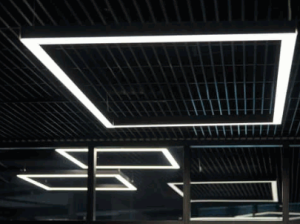
What Are The Benefits Of Using LED Ceiling Lights?
LED Ceiling Lights offer several benefits to users, including high energy efficiency, long service life, and versatile design options. These fixtures are known for their superior performance, durability, and aesthetic appeal in various indoor settings.
One of the key advantages of LED Ceiling Lights is their remarkable energy efficiency, consuming significantly less power compared to traditional lighting solutions. This not only leads to lower electricity bills but also contributes to a more sustainable environment by reducing carbon emissions. The extended service life of LED fixtures means less frequent replacements, saving both time and money in the long run. The customizable design options available with LED Ceiling Lights allow users to tailor the lighting to their specific needs and preferences, enhancing the overall ambiance of any space.
Energy Efficiency
LED Ceiling Lights are highly energy-efficient compared to traditional lighting sources such as incandescent bulbs or fluorescent tubes. The use of LEDs reduces energy consumption and lowers electricity costs over the fixture’s operational lifetime.
One of the key advantages of LED Ceiling Lights is their efficiency in converting electricity into light, where a significant portion of the energy is not wasted as heat, unlike incandescent bulbs. This efficiency translates into substantial cost savings for consumers, as not only do LEDs consume less electricity, but their durability and long lifespan also minimize the need for frequent replacements, reducing long-term operational expenses. The directional nature of LED lighting ensures that light is emitted exactly where needed, further enhancing overall energy efficiency.
Long Lifespan
LED Ceiling Lights have an exceptionally long service life, typically lasting for tens of thousands of hours before needing replacement. This extended lifespan reduces maintenance requirements and enhances the overall durability of the lighting fixture.
The prolonged service life of LED Ceiling Lights can be attributed to their energy-efficient nature and solid-state construction, which minimizes wear and tear. The absence of fragile components like filaments or glass tubes in LEDs further adds to their longevity.
One of the key benefits of these extended service lives is the significant reduction in maintenance and replacement costs over time. Businesses and homeowners alike can enjoy lower expenses and fewer disruptions due to the durability of LED ceiling lights.
Versatility In Design
LED Ceiling Lights offer diverse design options to suit different interior aesthetics and lighting requirements. From sleek and modern fixtures to customizable configurations, LED lighting solutions provide versatility in design for various applications.
With LED technology constantly evolving, these ceiling lights come in a myriad of styles, shapes, and functionalities, ensuring you can find the perfect fit for any space. Whether you prefer a minimalist look or a statement piece, there is an LED ceiling light that can cater to your taste.
The flexibility in design allows for the integration of smart features such as dimming capabilities and color-changing options, further enhancing both the ambiance and functionality of the lighting.
Environmentally Friendly
LED Ceiling Lights are environmentally friendly lighting options that contribute to sustainable practices in the lighting industry. LEDs are free from harmful materials like mercury, making them safe for disposal and reducing environmental impact.
LED technology consumes significantly less energy compared to traditional lighting sources, reducing electricity consumption and emissions. This energy efficiency not only lowers energy bills for households and businesses but also plays a crucial role in conserving natural resources.
The long lifespan of LED Ceiling Lights further enhances their eco-friendly profile by reducing the frequency of replacements, thus decreasing waste generation. This durability not only saves money in the long run but also minimizes the carbon footprint associated with manufacturing and transportation.
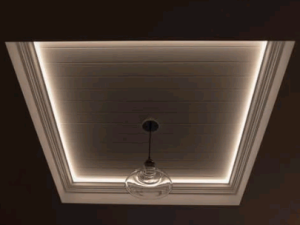
What Are The Different Types Of LED Ceiling Lights?
LED Ceiling Lights come in various types to cater to different lighting needs and design preferences. These types include recessed LED lights, flush mount LED lights, pendant LED lights, and track LED lights, each offering unique features and applications.
Recessed LED lights are ideal for providing ambient lighting without taking up visual space and are commonly used in modern interiors for a sleek and minimalist look. On the other hand, flush-mount LED lights are perfect for rooms with low ceilings, offering a clean and unobtrusive lighting solution. Pendant LED lights, with their decorative appeal, are often used to add a touch of style and character to living spaces or dining areas.
Track LED lights are versatile and adjustable, making them suitable for highlighting artwork or accentuating specific areas in a room. Their flexibility in directing light makes them a popular choice for task lighting or spotlighting architectural elements.
Recessed LED Lights
Recessed LED Lights are fixtures that are installed into the ceiling, creating a seamless and streamlined lighting effect. These lights provide ambient illumination without protruding from the ceiling surface, offering a modern and unobtrusive lighting solution.
The flush-mounted design of recessed LED lights allows them to be discreetly integrated into any space, making them ideal for areas where you want the focus to be on the illuminated environment rather than the light fixtures themselves. The installation process involves cutting an opening in the ceiling, wiring the fixtures, and securing them in place, resulting in a clean and polished look. One of the main advantages of recessed lighting is the ability to customize the layout to suit the specific lighting needs of different areas within a room.
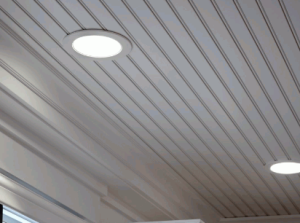
Flush Mount LED Lights
Flush Mount LED Lights are surface-mounted fixtures that sit close to the ceiling, providing even and widespread illumination. These lights are suitable for rooms with low ceilings or where a minimalistic lighting design is desired.
One of the key advantages of flush-mount LED lights is their low-profile installation, which makes them perfect for spaces with limited overhead clearance. Their sleek design seamlessly blends into the ceiling, creating a clean and modern look. These lights offer uniform light distribution, eliminating shadows and producing a soft ambient glow.
Due to their versatility, flush-mount LED lights are ideal for various room settings such as bedrooms, kitchens, hallways, and bathrooms. They provide ample illumination without overpowering the space, making them a practical choice for both residential and commercial applications.
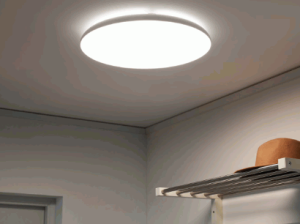
Pendant LED Lights
Pendant LED Lights are suspended fixtures that hang from the ceiling, adding a decorative and functional element to the space. These lights are versatile in design, making them ideal for task lighting or accentuating specific areas in a room.
The beauty of pendant LED lights lies in their ability to create both ambient lighting in a room and focus illumination on key areas, such as kitchen islands or dining tables. With a diverse range of sizes, shapes, and finishes available, these fixtures can complement various interior styles, from modern and minimalist to rustic and industrial.
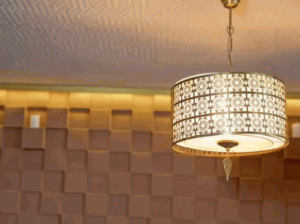
Track LED Lights
Track LED Lights consist of multiple adjustable light fixtures mounted on a track system, allowing flexibility in directing light where needed. These lights are popular for accent lighting, highlighting artwork, or creating directional illumination in spaces.
One of the key features of track LED lights is their ability to be easily adjusted, providing the user with the freedom to change the direction and focus of the light without needing to install additional fixtures. This adjustable design allows for customized lighting setups that can adapt to different needs and preferences.
Track lighting is versatile, making it an ideal choice for various applications such as illuminating kitchen countertops, showcasing a gallery of photos, or adding drama to architectural features. The ability to move the individual fixtures along the track enables users to create dynamic lighting effects that can transform a space’s ambiance with ease.
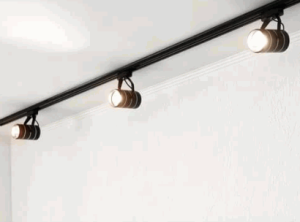
What Are The Factors To Consider When Choosing LED Ceiling Lights?
When selecting LED Ceiling Lights, it is essential to consider factors such as brightness levels, color temperature, energy efficiency ratings, and the size/placement of the fixtures. These considerations ensure optimal performance and visual appeal in the chosen lighting solution.
Proper evaluation of these aspects plays a vital role in determining the ambiance and functionality of the space.
- Brightness levels dictate the intensity of the illumination, affecting the room’s overall mood and functionality.
- Color temperature influences the hue and tone of the light emitted, contributing to the space’s atmosphere and color rendition.
- Energy efficiency ratings not only impact electricity bills but also reflect the environmental impact of the lighting choice.
- Optimal size and placement ensure an even distribution of light, preventing glares and shadows for a comfortable environment.
Considering these factors leads to a well-thought-out decision, enhancing both the aesthetics and practicality of the lighting design.
Brightness And Color Temperature
The brightness and color temperature of LED Ceiling Lights play a crucial role in determining the quality of light output. Selecting the right brightness level and color temperature ensures that the lighting meets the desired illumination needs and ambiance of the space.
In terms of brightness, it directly impacts the intensity and visibility of the light emitted from the fixture. Higher brightness levels are ideal for task-oriented spaces like kitchens or study areas, where clear illumination is essential. On the other hand, lower brightness settings create a cozy, ambient environment suitable for living rooms or bedrooms.
The color temperature of the LED light source sets the mood and tone of a room. Warmer color temperatures (2700K-3000K) emit a soft, yellowish glow, perfect for creating a cozy and inviting atmosphere, while cooler temperatures (4000K-5000K) offer brighter, clearer light suitable for spaces that require concentration and focus, such as offices or workstations.
Size And Placement
The size and placement of LED Ceiling Lights are essential considerations to ensure proper lighting coverage and aesthetic appeal. Selecting fixtures of suitable sizes and strategically placing them in the room enhances the overall lighting effect and visual balance.
In terms of selecting the right size for LED Ceiling Lights, it’s crucial to consider both the dimensions of the space and the intended purpose of the lighting. Proper sizing ensures that the light output is sufficient to illuminate the room without overpowering it or creating shadows. The placement of the fixtures plays a significant role in achieving a harmonious lighting scheme.
For rooms with high ceilings, larger fixtures may be more appropriate to fill the vertical space adequately. In contrast, smaller rooms benefit from compact fixtures that provide ample light without overwhelming the area. Positioning lights in the center of the room typically offers more balanced illumination, while strategic placement along walls or corners can create ambient or accent lighting effects.
Dimming Capabilities
LED Ceiling Lights with dimming capabilities offer flexibility in adjusting the light intensity to suit different lighting preferences and moods. Dimmable fixtures provide control over brightness levels, creating customizable lighting experiences in various settings.
Dimming features in LED Ceiling Lights allow users to effortlessly transition from bright, invigorating light to soft, cozy ambiance, enhancing the overall comfort and aesthetics of a room. The ability to dim the lights also adds a layer of sophistication, enabling individuals to create the perfect atmosphere for different activities, such as reading, relaxing, or entertaining guests. The energy-saving benefits of dimmable LEDs contribute to cost-efficiency and environmental sustainability, as they consume less power when dimmed.
Energy Efficiency Ratings
Energy Efficiency Ratings are important indicators of the power consumption and performance of LED Ceiling Lights. Higher energy efficiency ratings signify lower energy costs and reduced environmental impact, making them a preferred choice for sustainable lighting solutions.
Considering the long-term benefits, investing in LED Ceiling Lights with high energy efficiency ratings can lead to substantial savings on electricity bills over time. These ratings provide consumers with a clear understanding of how efficiently the light fixtures convert electricity into light, indicating their overall performance and effectiveness. By opting for fixtures with top-tier energy efficiency, households, and businesses can significantly reduce their energy consumption, thereby contributing to a greener and more environmentally friendly future.
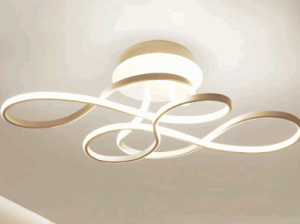
Are There Any Drawbacks To Using LED Ceiling Lights?
While LED Ceiling Lights offer numerous benefits, there are some drawbacks to consider. These may include initial pricing concerns, compatibility issues with existing fixtures, and potential failures in LED components. Understanding these drawbacks helps users make informed decisions when choosing LED lighting solutions.
One of the primary concerns that consumers may encounter with LED Ceiling Lights is the initial pricing. LED lights can have a higher upfront cost than traditional lighting options, which might deter budget-conscious individuals. Compatibility issues with existing fixtures can arise, requiring additional adapters or modifications to ensure a seamless integration.
Component failures in LED lights can also be a worry for some users. While LEDs are known for their longevity, occasional issues may occur that could lead to flickering lights or complete malfunction. To minimize these potential drawbacks, it is advisable to purchase LED lights from reputable brands and suppliers, ensuring quality components and proper warranties are in place.
How Do LED Ceiling Lights Compare To Other Types of Lighting?
LED Ceiling Lights offer significant advantages over traditional lighting sources such as incandescent, fluorescent, and halogen lights. Compared to these alternatives, LED lighting solutions provide better energy efficiency, longer service lives, and superior light quality, making them a preferred choice for modern illumination.
One of the key benefits of LED Ceiling Lights is their energy efficiency. LED fixtures consume much less power compared to incandescent, fluorescent, and halogen lights, translating into reduced energy bills and a lower carbon footprint. LED lights have an exceptionally long service life, lasting up to 25 times longer than traditional bulbs. This longevity not only saves money on frequent replacements but also reduces the environmental impact of discarded light bulbs.
Incandescent Lights
In contrast to LED Ceiling Lights, incandescent lights are less energy-efficient and have shorter service lives. The use of incandescent bulbs results in higher electricity costs and more frequent replacements, making them less cost-effective and environmentally friendly compared to LED lighting solutions.
LED Ceiling Lights consume much less electricity than traditional incandescent lights, which translates into significant energy savings over time. This not only reduces utility bills but also contributes to a greener environment by lowering overall energy consumption. LED fixtures last significantly longer than incandescent bulbs, with an average operational life of tens of thousands of hours, reducing the hassle and cost of frequent replacements. These factors make LED ceiling lights a more sustainable and cost-effective lighting option for residential and commercial spaces.

Fluorescent Lights
Fluorescent lights, while more energy-efficient than incandescent bulbs, still fall short in longevity and light quality compared to LED Ceiling Lights. LED solutions offer better durability, instant illumination, and environmental benefits that surpass traditional fluorescent tube lighting.
LED Ceiling Lights have proven to have a significantly longer service life than fluorescent tubes, lasting up to 25 times longer in comparison. LED lighting provides a superior quality of light, offering a consistent brightness without flickering or humming sounds commonly associated with fluorescent lights.
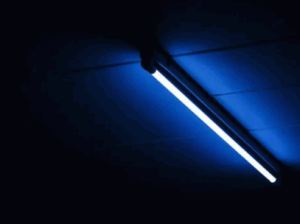
Halogen Lights
Halogen lights, though brighter than traditional incandescent bulbs, consume more energy and generate excess heat. LED Ceiling Lights, on the other hand, offer superior energy efficiency, minimal heat emission, and longer service lives, making them a more sustainable and cost-effective lighting option.
When comparing halogen lights and LED Ceiling Lights, it’s crucial to consider the impact on both energy consumption and performance.
Halogen lights may provide a bright light output, but their inefficiency in power usage translates into higher electricity bills and contributes to increased environmental pollution. In contrast, LED Ceiling Lights consume significantly less power, leading to substantial energy savings over time.
The minimal heat generated by LEDs not only improves safety but also enhances their durability, ensuring a longer lifespan for the lighting solution.
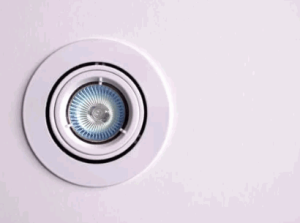
Conclusion
In conclusion, LED Ceiling Lights represent a significant advancement in lighting technology, offering users unparalleled energy efficiency, long service lives, and versatile design options. While there are some drawbacks to consider, the overall benefits of LED lighting solutions outweigh the concerns, positioning them as the future of efficient and sustainable illumination.
LED Ceiling Lights have transformed the lighting industry by providing a brighter, more energy-efficient alternative to traditional lighting fixtures. These lights consume less power, resulting in reduced electricity bills and lower carbon emissions, making them an environmentally friendly choice. The extended lifespan of LED bulbs reduces maintenance costs and the frequency of replacements, offering users long-term savings. Despite initial higher upfront costs, the energy savings and durability of LED Ceiling Lights make them a cost-effective investment over time. The design flexibility of LEDs allows for customizable lighting solutions that can enhance the ambiance and aesthetics of any space.





